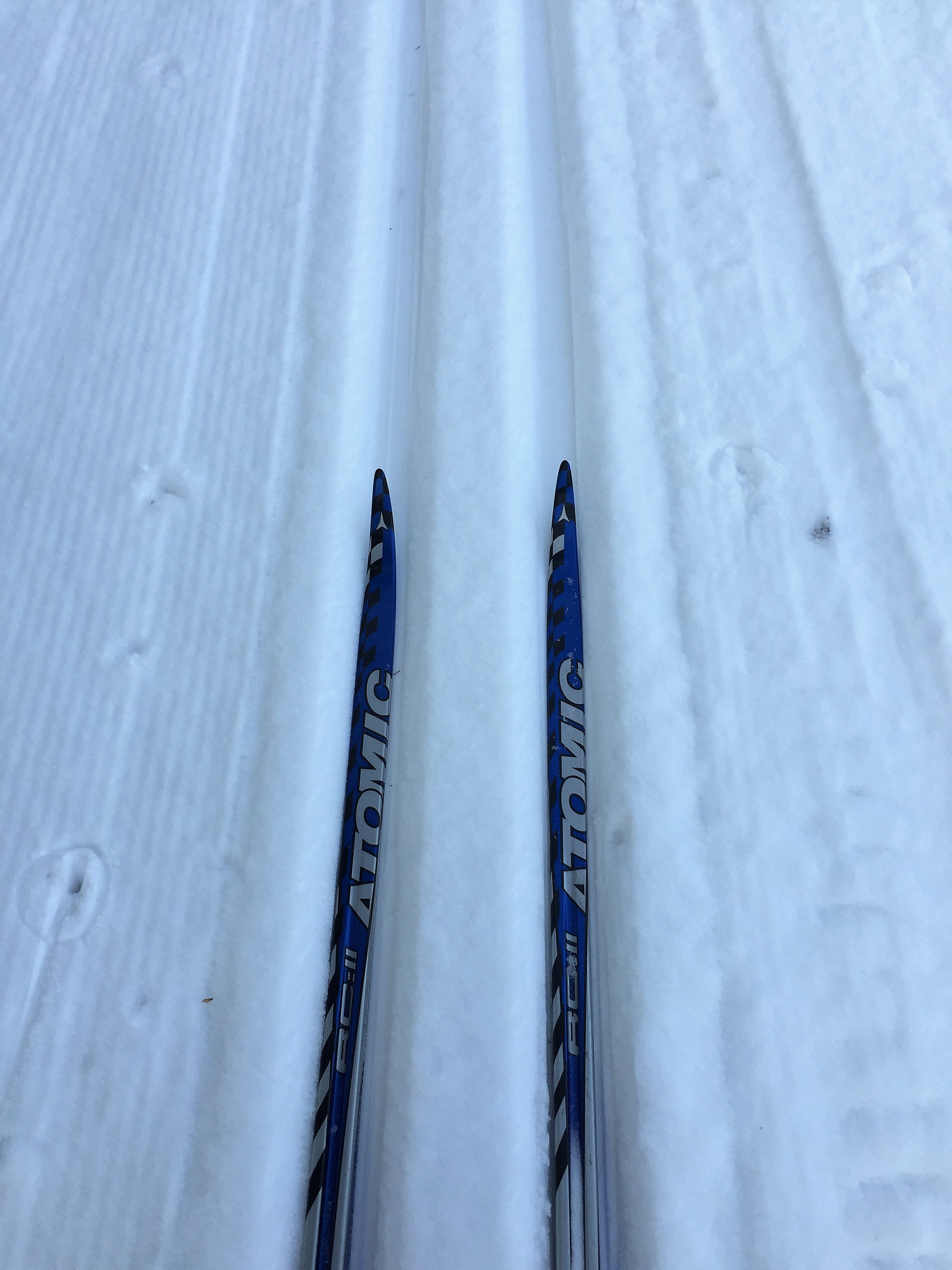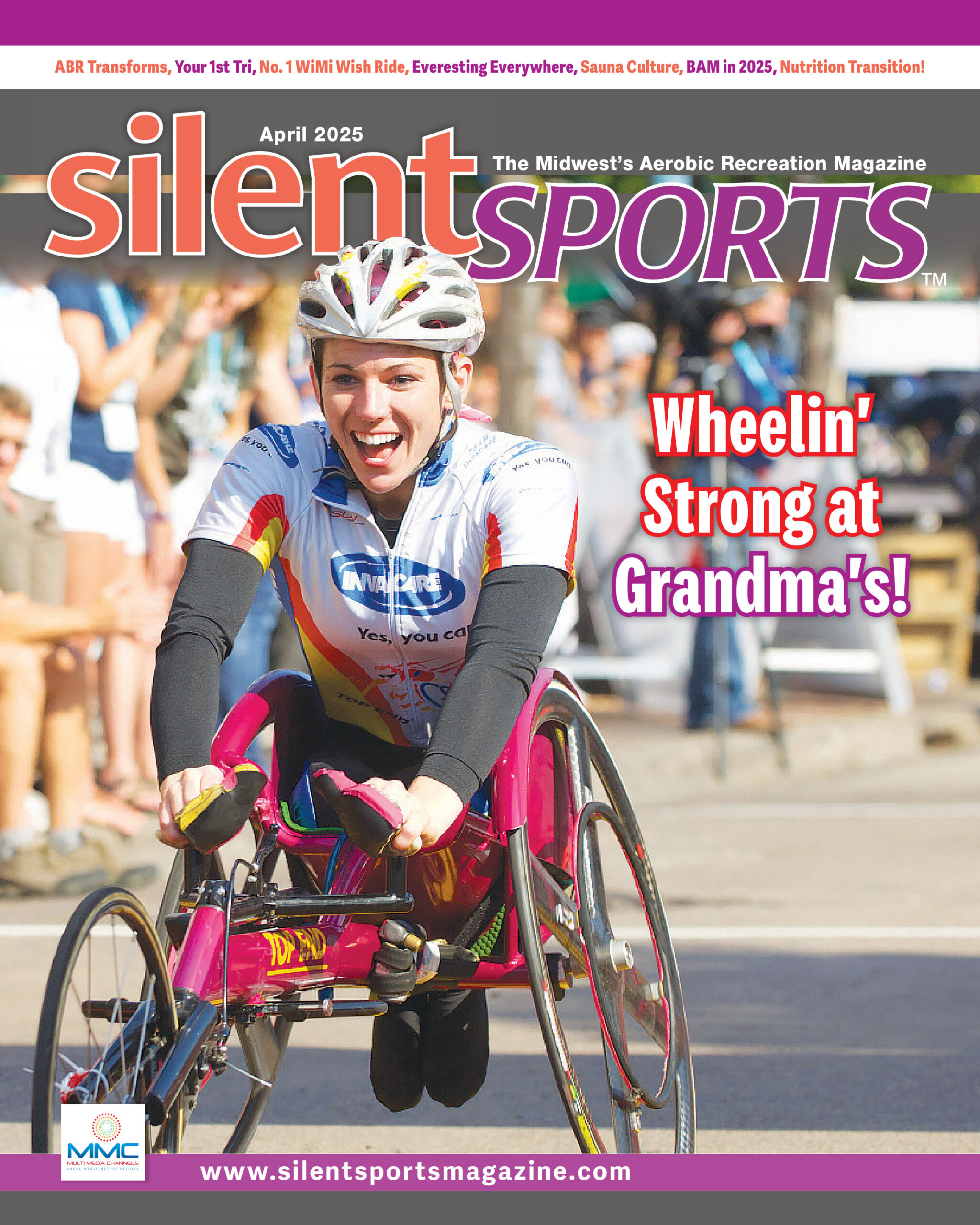When skiing became skating

BY DAVE FOLEY
CROSS-COUNTRY SKIING
Everyone was a classic skier until the mid-1980s. We dropped our skis in parallel tracks and moved forward using the diagonal stride. Being a runner, that worked to my advantage. Those same muscles that I spent all year conditioning to run marathons served me well as a skier, but I didn’t get any style points for grace, though. The fluidity of this activity was lost on me. People would remark that I was “running” on skis, which was probably a pretty accurate assessment of my form. It worked on hills where I passed other skiers as I powered upward using brute strength. Downhills didn’t go so well and trying to stay upright while descending at an increasing rate of speed proved problematic. The lack of coordination and balance that plagued my attempts to succeed at ice skating, soccer, basketball, and just about every other sport was a recipe for disaster on the descent. On shaking legs I struggled to keep upright but often ended up plunging into the snow.
Yet if not talented, I was determined. The hours of practice – sometimes skiing five or six nights a week – were fruitful. My racing fortunes improved and while not yet a contender, I became competitive in cross-country ski races.
Then Bill Koch won the silver medal in the 30k race in the 1976 Olympics – our country’s first, and still only medal in that event. He became a national hero and everyone wanted to ski like Bill. In 1980 he popularized a new skiing technique that resembled ice skating and is now known as freestyle skiing. Using this technique, he became the cross country overall World Cup Champion in 1982. Koch’s success inspired us and soon all serious skiers in America were pushing their skis outside the parallel tracks in a skating motion. The slower classic-style skiing was becoming obsolete; at least it was among ski-racers.
By 1985 skate skiers dominated Michigan’s races. A good freestyle skier could easily outdistance a skilled competitor who was relying on the classic diagonal stride. This became apparent when I entered the Gran Traverse 30k. At the start there were six lanes of parallel tracks pressed into the snow.
When the gun fired, a group of skaters sprinting ahead, obliterating all of the set tracks. Those of us relying on the diagonal stride didn’t fare well. With no tracks to hold my skis in place, I struggled. Instead of using my strength to propel myself forward, I wasted energy trying to keep my skis parallel. By the end I was exhausted and dispirited, so I decided it was time to learn how to skate.
I watched an instructional video put out by the Northern Michigan University ski team where the skiers seemed to float over the snow – their arms and feet working together as graceful as dancers; they made it look easy. I soon discovered much more was required than the simple kick and glide of diagonal striding. After a couple awkward sessions on my own, I took lessons. The instructors were skilled and patient, and I’m sure had to stifle laughter as they watched me try to balance on one ski as I shifted my weight. Crashes were frequent so I was glad the snow provided soft landings. Eventually I was able to do a passable freestyle, but my timing was off – the arms and feet never worked as a team. I looked like I was skiing with a limp.
By 1986 I was ready to race again. The VASA ski trail in Traverse City now had a set of tracks cut along the right side of the trail and skaters were told to stay to the left. The idea was to have a track running through the entire course for classic skiers.
By that time I was an avid canoe racer and applied my new upper body fitness to double poling. Although I did some skating, I was so inefficient that within a couple of minutes, my legs were burning, forcing me to switch to double poling until I recovered. In the VASA I did well when measured against those that stayed with classic skiing but finished far behind most skaters. Scoring was entirely based on overall finish placing so skaters dominated and classic skiers won few medals.
The skating versus classical skiing controversy wasn’t just an issue in Michigan. The International Ski Federation (FIS) was trying to deal with it as well. Attempts to ban skating in Olympic and World Championships initially failed. Even if skating was prohibited, it was hard to monitor ski trails that ran for miles through forest land. A few minutes of skating along an isolated section of trail could make a big difference in the scoring of a classical ski race. While the purists continued to seek to ban freestyle skiing from major competitions, it became inevitable that skating’s popularity was growing. Eventually a compromise was reached. For the 1987 FIS World Nordic Championships in Oberstdorf, Germany, and for the 1988 Olympic Winter Games in Calgary, Canada, the men’s 15 and 30k races would be classic, no-skating events; the 50k and the relay (four men each racing 10k) would be freestyle, with unlimited skating.
By the late 1980s cross country ski races in North America had separated classic and freestyle skiers in the scoring, and race directors worked to insure that classical skiers would have a good track throughout the race.
I never mastered skate skiing – getting arms and legs to work in concert proved elusive. I’ve reverted to being a classical skier again, happy to be in the track watching the freestyle skiers fly past me.

